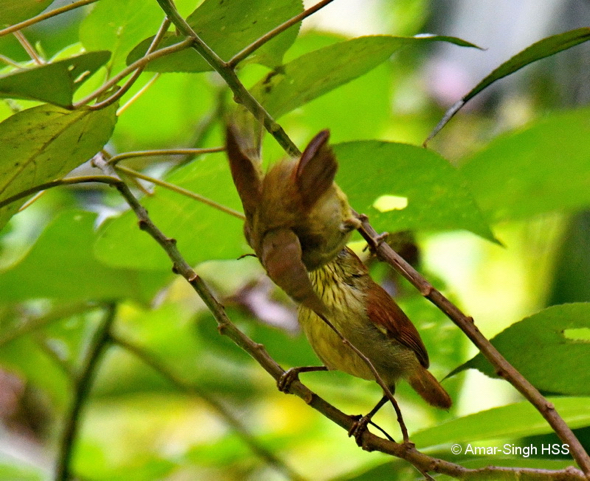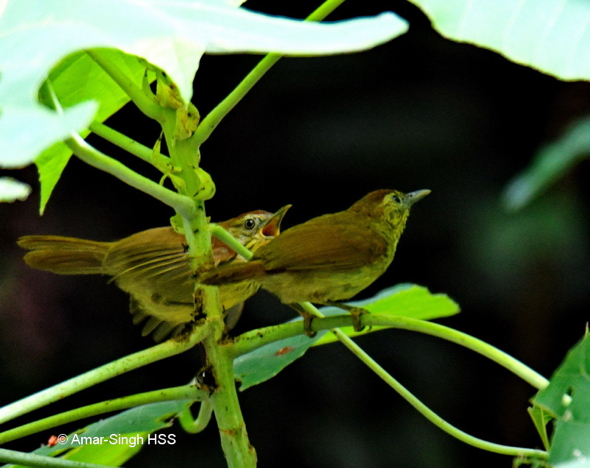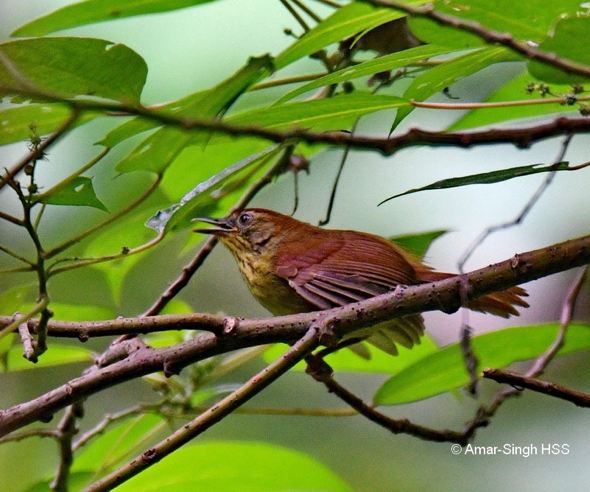“I observed a small group of 5 Pin-striped Tit Babblers (Macronus gularis gularis) comprising 2 juveniles and 3 adults.

“They were foraging together with the juveniles being fed by the adults. I cannot be certain which of the 3 adults (or if all of them) were feeding both the juveniles as action is fast and they flit in and out of dense foliage.

“Again, I was surprised to see one adult feeding the young Pipturus argenteusfruit (Native or Australian Mulberry) – see above two images. The actual feeding moment was ‘upside-down’. Most of the feeding was presumed insect prey gleaned from the foliage.

“Excited, begging juveniles are shown above and below.

“Adults made both calls and song to keep the group together.”
Dato’ Dr Amar-Singh HSS
Ipoh, Perak, Malaysia
3rd July 2018
Location: Ipoh, Perak, Malaysia
Habitat: Outskirts of the city with secondary growth









2 Responses
But they can see each other. So why do they need call and song to keep the group together ?
To be doubly sure that the other bird is of the same species. External appearance may sometimes deceive… you need to be dead sure that the other bird is of the same species, as otherwise interactions, especially courtship and copulation, may end up as wasted energies.